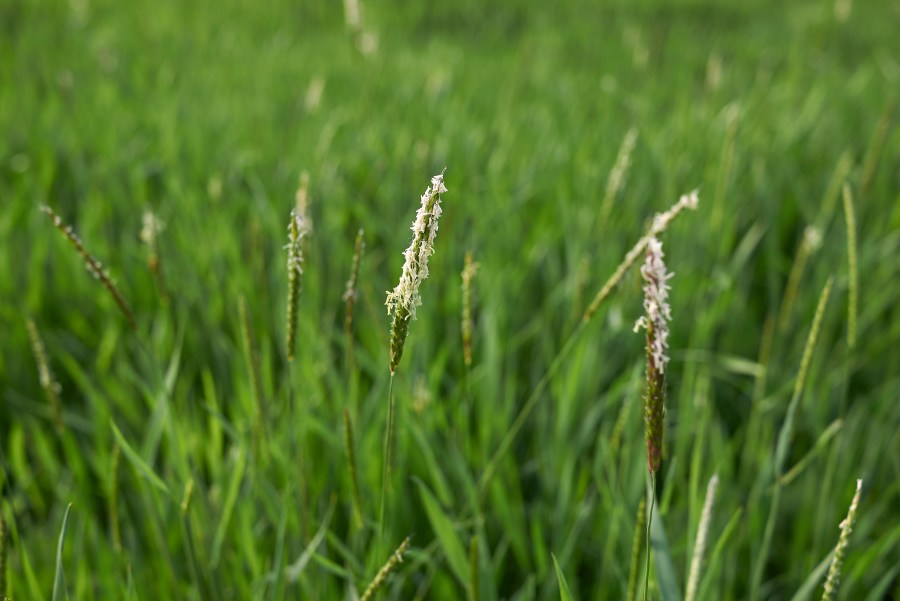Just in time to help bolster this autumn’s weed control strategies, Isoflex active is now available to use on-farm following the launch of Fundatis herbicide. CPM takes a deep dive into FMC’s newest product.
“The arrival of the two new herbicide actives in Fundatis is very timely.” PAUL FOGG
By Janine Adamson
Following much anticipation, including four years of extensive trials and positioning work in GB, Fundatis powered by Isoflex active is finally available for on-farm use this autumn.
Growers have been waiting for the first product to arrive since the approval of Isoflex active (bixlozone) last summer, and Fundatis herbicide (bixlozone+ beflubutamid) from FMC is now here.
With 21 weeds on its label including cleavers, groundsel, mayweeds, red-dead nettle and speedwells, plus four grassweeds – blackgrass, Italian ryegrass, annual meadow grass and rough meadow grass – it offers one of the broadest spectrums of control in the autumn cereal herbicide market.
NEW GB ACTIVES
Even so, competition within this space is stiff, so what sets Fundatis apart from the other runners? For one, both components of the product – Isoflex active and beflubutamid – are active ingredients which are new to the GB market.
In the case of Isoflex active – a flagship launch from FMC – it’s an HRAC Group 13 herbicide from the isoxazolidinone family, identified during the discovery of clomazone in the 1980s, explains global technical product manager, David Hennens. “Compared with clomazone, Isoflex active has different physical-chemical properties that result in a distinctive biological performance,” he adds.
However, it wasn’t until 2012 that FMC took the decision to investigate Isoflex active further, based on its performance against key weed species both at a European and global level. This is when the company began to screen the active in glasshouses, as well as conduct initial in-field testing.
“Despite that being more than 10 years ago, this is a very standard timeline when bringing a new active to the European market – it takes that long plus investment to generate adequate performance data and understanding, as well as to subsequently submit and achieve regulatory approval ahead of commercialisation,” says David.
In terms of its mode of action, Isoflex active inhibits susceptible plants from producing carotenoids – pigments that are essential to light energy capture and photoprotection of chloroplasts during photosynthesis, ensuring normal plant growth. Subsequently, due to lack of chlorophyl production, susceptible plants may show chlorosis and/or bleaching and ultimately die off.
To ensure non-target species, in this case the cereal crop, remain unaffected, FMC has invested in microencapsulation technology as is the case with Fundatis, highlights David. “This is to ensure a high level of crop safety.
“While it’s impossible to prevent bleaching of the crop outright, and the symptoms are transient with no negative impact on establishment and development, through microencapsulation we can reduce the risk to very low levels.”
He points out that while this unique formulation has taken time to develop, it offers a range of benefits without comprising the product’s actual performance in the field. “Based on this, balanced with the level of efficacy, Isoflex active and therefore Fundatis should secure a unique position in the market,” he suggests.
Globally, in countries such as Australia, Argentina, Brazil, China and India, products based on Isoflex active are already proving a hit, although it’s not yet available in wider Europe.
BROAD SPECTRUM CONTROL
According to David, it’s Isoflex active’s efficacy against difficult to control key grassweeds and its additional broad spectrum of control from its pairing with beflubutamid which proves appealing.
“While in terms of resistance management, with the Isoflex active new mode of action, we’ve not observed differences in performance against sampled weed populations regardless their resistance profile.
“However, with known weed control challenges and resistance challenges to multiple existing modes of action, Isoflex active must be used in accordance with IPM principles and best practice to safeguard this vital chemistry,” he stresses. “With so few new modes of actions being released for cereal crop weed control, it must be used wisely and sustainably.”
So what does the trade think so far? Frontier’s Paul Fogg says with an increasing drive towards IPM including the responsible use of plant protection products, having Fundatis in the armoury is a positive step. “Mode of action diversity is an essential aspect of that and is certainly the correct way forward.
“We should also consider what’s happening in Europe – particularly the non-renewal of flufenacet. Many believe this suggests the active’s days are numbered in the UK. The arrival of two new herbicide actives in Fundatis is therefore very timely,” he adds.
PROGRAMME PLANNING
Paul adds that while the new product’s launch is welcomed, growers will be scrutinising their input costs regardless. “The reality is, we can’t just continually layer spend; we have to look at the most effective way of using the building blocks available to devise a robust weed control programme.
“We know certain active ingredients are at risk of non-renewal, whereas others continue to work very well. In positioning Fundatis correctly, it should play a valid role.”
He adds that Frontier has been evaluating Isoflex active in field trials for around 3-4 years, confirming that it offers both blackgrass and ryegrass activity. In the face of glyphosate-resistant ryegrass, Paul believes this makes for a strong offer.
He’s also been impressed by its broadleaf weed control, which he says results from the additive control offered by the two active ingredients in combination.
In terms of application timing, Fundatis can be applied to winter wheat at both pre- and post-emergence, as well as pre-emergence in winter barley.
“Having the pre-em timing in barley is especially appealing and a great addition to the weed control options for that crop,” highlights Paul. “As for wheat, we believe the sweet-spot appears to be at peri-emergence, although we acknowledge this can be hard to achieve in reality.
“However, it appears to be very effective just as the plant emerges from the ground due to the herbicide’s root and shoot activity,” he proposes.
Paul agrees that the product’s stewardship must be taken seriously. “With Isoflex being a bleacher, responsible use as well as resistance management is fundamental to ensuring its long-term future.”
This article was taken from the latest issue of CPM. Read the article in full here.
For more articles like this, subscribe here.
Sign up for Crop Production Magazine’s FREE e-newsletter here.




